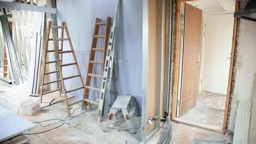
Most wildfires in the U.S. tend to occur between June and August, but in warmer parts of the country, a devastating fire can happen at any time. As a homesteader or someone who wants to start living a simpler life, it’s important to understand how to prepare and protect yourself, especially if you’re living in a fire zone that has fire restrictions most of the year.
Whether you’re currently in the planning stages of homesteading or starting to build one, knowing how wildfires could impact your home and family is essential to keeping everyone safe and preserving what you’ve worked toward.
With that in mind, let’s take a closer look at what you should know about the wildfire risks in your area, and how you can prepare yourself and your home by making wildfire safety an integral part of your plan.
Understanding the Risks
In 2021, there were nearly 59,000 wildfires in the United States, affecting over 7 million acres of land. As wildfire season becomes more intense and lasts later in the year every year, understanding the risks of homesteading in certain areas should be the first step in deciding where to build and how to protect yourself.
First, look at where you plan on building your cabin or homestead. Is it in a fire danger area? If so, make sure you’re not underinsured when working with a homeowner’s insurance company. Understand that you’ll need a plan in place to protect your home and family, even before you start building.
It’s also essential to understand some of the property and health risks that come with living in a fire-danger area. This may include how smoke damage can affect the integrity of your home and cause physical issues like respiratory struggles and short-term vision issues like red, itchy and burning eyes.
If you’re planning on homesteading to enjoy a more relaxed, slow pace, it’s also important to understand how wildfires could impact your dreams. A wildfire can happen at any time, disrupting the peaceful life of solace you’re looking for and causing a lot of stress. Nature is a wonderful healer, providing benefits like:
- Reduced stress
- Lower blood pressure
- Improved mood
- Stronger immune system
You’ll still get those benefits the more time you spend outside while homesteading but understand that a single fire could threaten to engulf those benefits, leaving you more stressed than ever.
Preparing Your Home for the Worst
In addition to having fire insurance, there are a few ways you can prepare your cabin and homestead for potential wildfires during the building process.
Most importantly, rely on fire-resistant building materials. Insulated Concrete Forms (ICFs) are often used in fire danger areas because of their fire-and-heat-resistant capabilities. No, your home doesn’t have to look like it's made of concrete to be considered safe. Nowadays, you can choose from a variety of fire-resistant siding materials, too, including:
- Stucco
- Stone
- Brick
- Metal
When it comes to “weak” points in the house, such as windows, double-glazing is your best bet, along with utilizing tempered glass and steel framing.
Don’t forget to consider the exterior of your home, as well. One of the best parts about living in a rural area is that you’re surrounded by natural beauty. So, it’s normal to want to spend as much time outside as possible, enjoying cool evenings on a wooden deck or letting your dog run free in a fenced-in backyard. However, these can serve as fire fuel very easily. Try to avoid using wood as much as possible around your home’s exterior, and keep your landscaping clean and well-watered.
Practicing Preparedness
Once you’ve moved into your homestead, the real work begins in preparing yourself and your family for wildfires.
Make sure to educate everyone in your family on how to report wildfires and have a plan in place for evacuating if one threatens your homestead. It’s a good rule of thumb for everyone to have their own evacuation bag to take with them if you all need to leave home in a hurry. It should include things like water, food, a battery-powered radio, a flashlight and first-aid items.
As a beginning homesteader, don’t let the threat of wildfires keep you from creating the cabin of your dreams, or stepping away from a hectic life to enjoy living in nature. However, like so many other aspects of homesteading, it’s essential to have a plan.
Unfortunately, wildfires aren’t going to stop any time soon. With things like climate change and human activity impacting and increasing wildfires, the best thing you can do as you plan to build your homestead is to be smart about construction and to keep yourself and your family well-educated on fire safety. Let this article serve as a starting point to help you prepare and consider taking extra steps to protect yourself and your home as you start the homesteading experience.
Sam Bowman writes about people, tech, wellness, and how they merge. He enjoys getting to utilize the internet for the community without actually having to leave his house. In his spare time, he likes running, reading, and combining the two in a run to his local bookstore.










